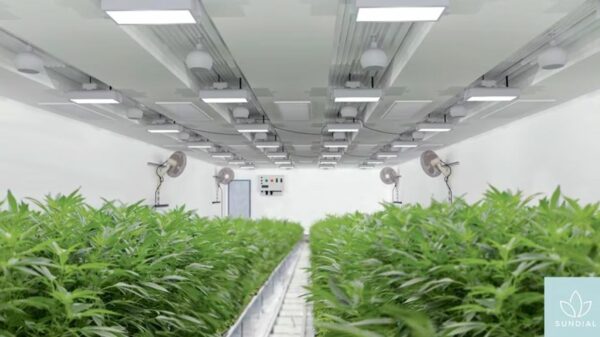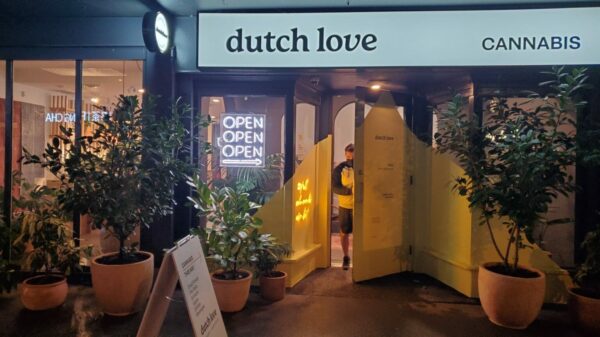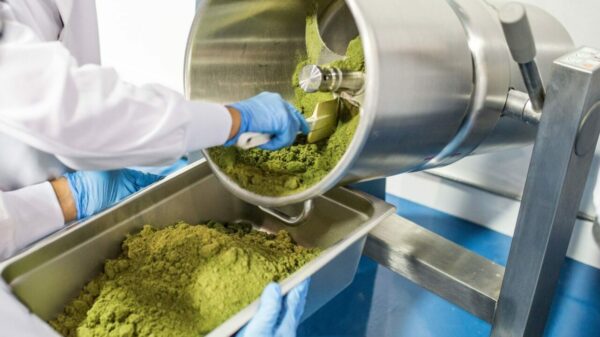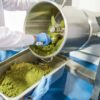While thirty alcoholic beverages can kill a person, you can’t walk out of a legal store with six standard cans of weed drink.
A lethal dose of THC can’t be realistically achieved in humans, according to the World Health Organization, which could be due to a low density of cannabinoid CB1 receptors in brainstem regions that control vital cardiovascular or respiratory functions.
Given that you can walk out of a liquor store with a literal boatload of booze, what does this all mean?
It means it’s time to free the cannabis six-pack, two-four, box-size infused beverage and whatever else Canada’s weed wizards want to throw at consumers. It’s up to adults to decide their limits. Producers, customers, private retailers and provincial cannabis stores are on board.
It’s hard for anyone just to understand there’s a limit when it’s not something people experience in any other shops, says Muse Cannabis store manager Frida Hallgren.
“It’s one of the things that has been inexplicable since the start, but it’s become extra obvious when we got the drinks,” she tells Mugglehead over the phone from Muse’s Granville Street location.
“Before that, it was within reason for the equivalencies,” she says. “But now with the drinks, it’s becoming so obvious that they don’t make sense because they’re all based on different things, but mostly the volume or weight and not the amount of active ingredient.”
Read more: Molson and Hexo joint venture Truss launches 5 new weed drinks
Currently, customers are restricted to possessing and therefore buying 30 grams of cannabis, dried or equivalent. To calculate such an equivalency you’d think our federal regulator would have some complex equation to transmogrify a balance between different consumption methods.
Nope. Just divide by 70.
That’s why I can walk out of a store with 73 bottles of Redecan Reign Drops — because their 30-millilitre contents divided by 70 is 0.41. And 30 grams divided by 0.41 is 73. This total purchase of $2,879 on the BC Cannabis Stores website rings in a cool 63,510 milligrams of THC.

Canada’s silly restrictions are hurting sales of beverages like Seth Rogen’s Houseplant sparkling waters. That (probably) makes Seth Rogen sad. You don’t want Seth to be sad, do you? Photo by Nick Laba
On the flipside, a 355 millilitre can divided by 70 equals a 5.1 gram equivalent, which means you can only buy five cans of Canopy’s Houseplant Grapefruit Sparkling Water because six would bust the 30 gram limit. A barely legal five-unit basket contains 12.5 milligrams of THC and totals $24.95. Sorry Seth.
If reading through that absurd math pains you as much as it does me, imagine having to explain it to a customer in a store.
“It’s very, very hard to relay that information to customers,” Hallgren says. Especially when you can buy nine cans of Canopy’s 10 milligram Deep Space drink — four times the potency of Houseplant — because they come in a miniaturized 222 millilitre format.
“For customers looking at it, it does not make sense. And it does not make sense to us either. It’s very confusing,” she says.
Now that Canada has gone through an educational process for the past year and a half, it’s time to let consumers choose their dosage, says Everett Knight, executive VP at The Valens Company (TSX: VLNS). It depends on what you weigh, what you ate, what your natural endocannabinoid system is like — it’s just like alcohol, he explains.
Read more: Why cannabis drinks are still set to make a splash: Valens CEO Q&A
“The educational process is important because you want to set the consumer up for success. But now that we’ve been through this education process, I think we’re in a spot today that we can really leave it up to the consumer, because we have smart consumers,” Knight says. “This is an adult consumer, we have to remember.”
Another way updating beverage restrictions could set consumers up for success is by introducing economies of scale. If bigger basket sizes and grouped packages — currently restricted to 2.1 litres, which again kills the six-pack — the cost benefits will flow directly to the customer, according to Knight.
“As the unit economics get better, it gets better for us as well as the consumers. So it’s really a win-win scenario,” he says.
Knight notes that this year beverages have gone from launch to 1.3 per cent of overall sales in June. At Muse, drink sales are reportedly approaching 5 per cent of total sales. Deep Space is currently leading the category, which Hallgren speculates is because of its potency and small size.
Ontario Cannabis Store communications director Daffyd Roderick says these limitations can have a number of negative consequences.
“Current regulatory restrictions around the dried cannabis equivalency conversion rates for cannabis beverages may create responsible consumption risks by incentivizing licensed producers to primarily focus on introducing smaller beverages by volume at the maximum potency limit of 10 milligrams per beverage,” he told Mugglehead in an email. “These restrictions also create economic inefficiencies in distributing cannabis beverages and fulfilling consumer expectations (i.e., preventing six-packs of standardized 355 millilitre beverage units).”
The OCS has shared these observations with Health Canada directly, Roderick said, and is encouraged that the regulator continues to closely assess whether recently introduced cannabis 2.0 regulations require further adjustments following these early months of adoption.
For someone working in retail like Hallgren, it’s been one of the more frustrating aspects of regulation.
“So I’m very happy that there’s been more attention drawn to it,” she says. “Because people ask ‘Who decided that?’ and I don’t know who decided to do that. I don’t know what logic they put into it.”
“To me, it’s very hard to find any logic.”
If it doesn’t make sense to you either, you can tell the federal government via the online Cannabis Reporting Form.
Top image: Seth Rogen speaking at the 2019 San Diego Comic Con International. Photo by Gage Skidmore via Wikimedia Commons
nick@mugglehead.com
@nick_laba














